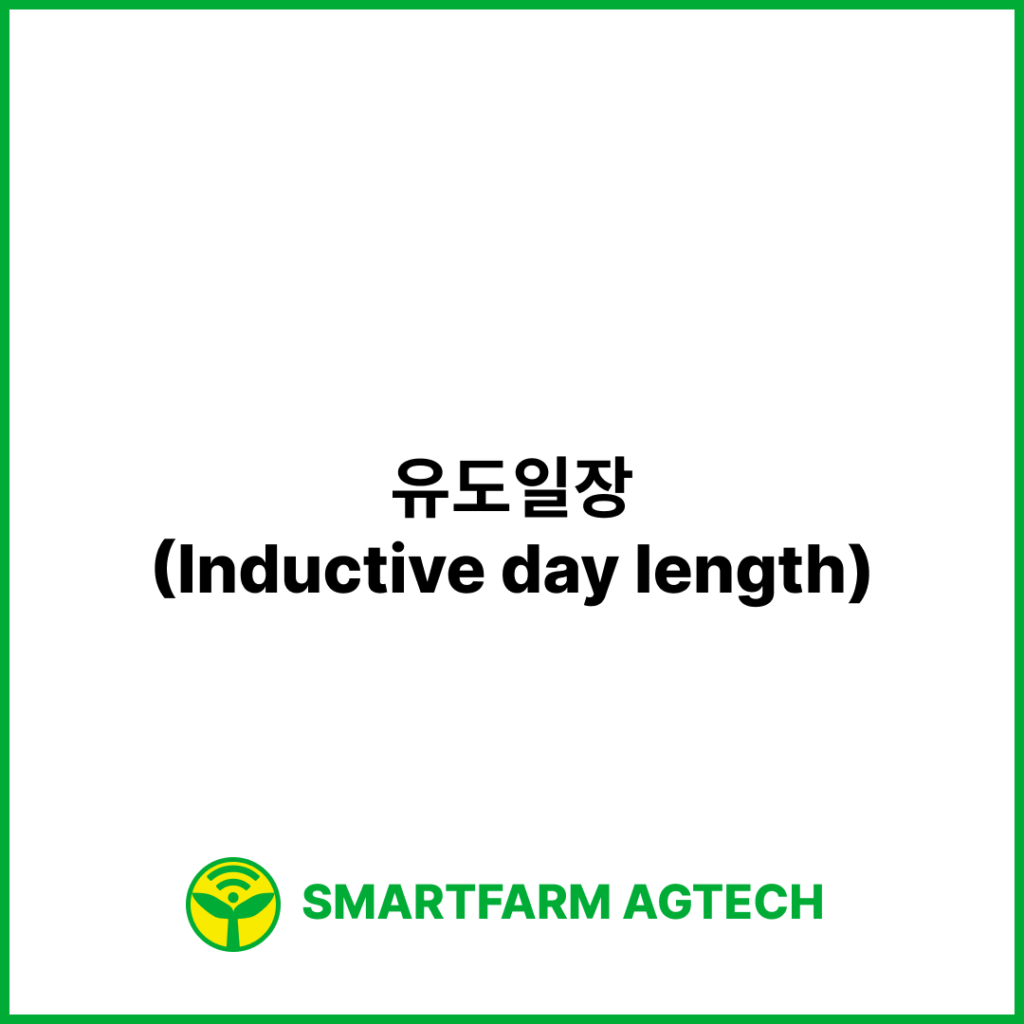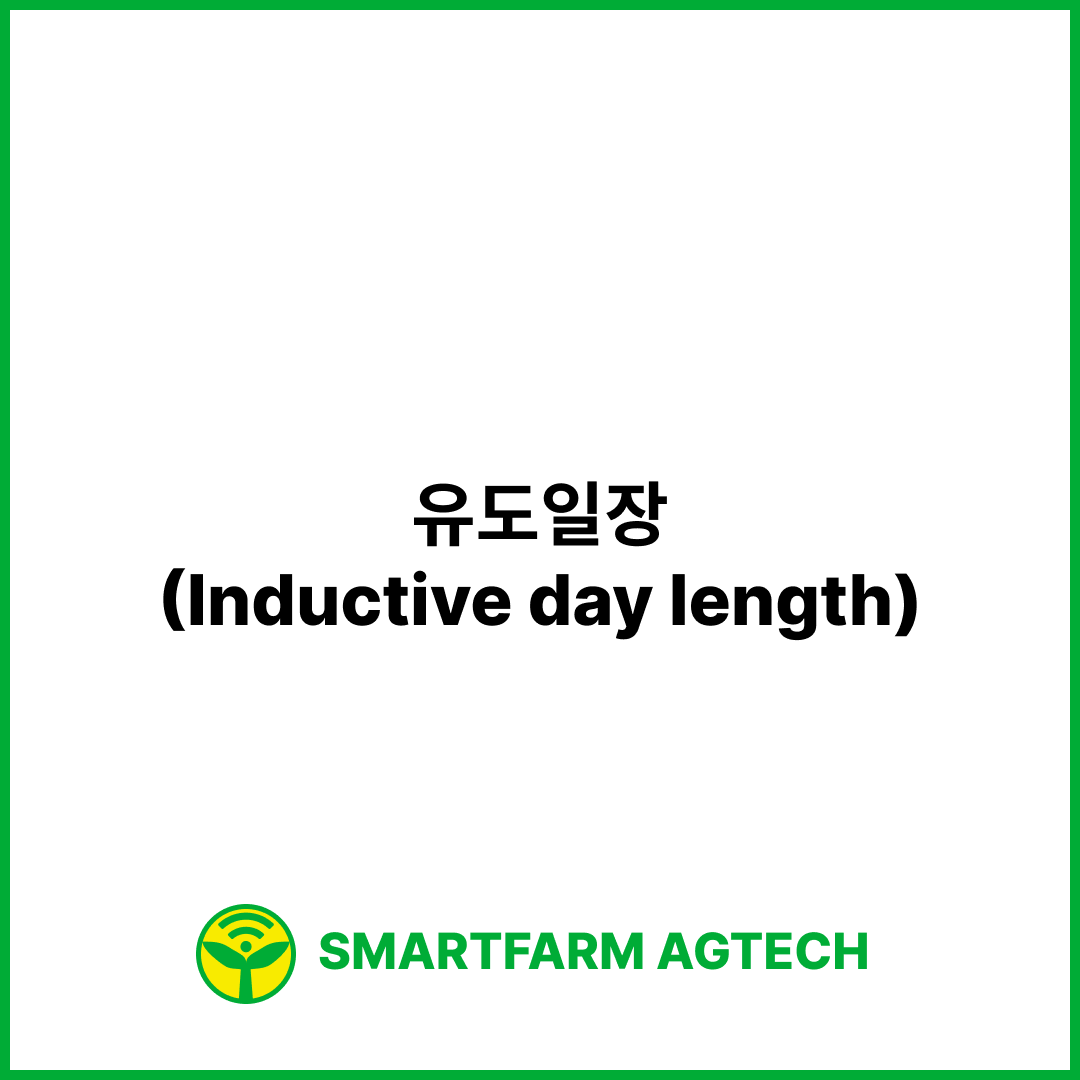유도일장(Inductive day length) | 스마트팜피디아 (Smartfarm Pedia)는 스마트농업관리사 혹은 스마트농업전문가라면 알아야 할 내용 중에 하나입니다. 자세한 내용은 아래의 내용을 통해 확인해보시기 바랍니다.
유도일장(Inductive day length) | 스마트팜피디아 (Smartfarm Pedia)
유도일장(Inductive day length)

유도일장(Inductive day length)은 스마트팜 환경에서 식물의 꽃말이 과정을 유발할 수 있는 특정 일조 시간을 가리킵니다. 이 개념은 다양한 식물 종의 채소성장에서 생식 발달로의 전환에 영향을 주는 중요한 역할을 합니다.
식물은 일조 시간의 변화를 감지하는 놀라운 능력을 가지고 있는데, 이를 광주기현상이라고 합니다. 종에 따라 특정한 시간 동안 빛에 노출되어야 꽃말이 과정이 시작되는 경우가 많습니다. 이러한 시간을 유도일장이라고 부릅니다. 서로 다른 식물은 생태학적 틈새와 진화적 역사에 따라 다양한 일조 시간 변화에 반응하기 위해 진화해왔습니다.
예를 들어 딸기를 재배하는 스마트팜을 생각해봅시다. 이 식물은 다른 많은 식물들처럼 꽃말이 과정이 시작되기 위해 일조 시간 변화에 반응하는 유전적 소질을 가지고 있습니다. 딸기의 경우 유도일장이 12시간이라면, 이러한 특정한 일조 시간에 노출되면 식물은 생식 단계로의 전환을 시작합니다. 이러한 적응은 식물의 생식 성공을 위해 중요한 역할을 하며, 꽃말이와 이후의 열매 결실이 유리한 환경 조건에서 이루어지도록 합니다.
스마트팜의 맥락에서 다양한 작물에 대한 유도일장의 이해는 성장 조건을 최적화하는 데 중요한 요소가 됩니다. 인공 빛을 제공하거나 자연 빛에 노출을 조절함으로써 농부는 광주기를 조작하여 원하는 꽃말이 패턴을 달성할 수 있습니다. 이러한 지식은 작물의 심기, 수확, 전반적인 재배 관리의 정밀한 일정 조정을 가능하게 합니다.
결론적으로, 유도일장이라는 개념은 스마트팜 분야에서 식물과 환경 간의 복잡한 관계를 강조합니다. 이는 식물이 일조 시간의 변화를 감지하고 이에 반응하는 능력을 강조하며, 결국 생식 행동을 영향을 주고 작물 재배 전략의 성공을 형성합니다.
Inductive day length
Inductive day length refers to the specific duration of daylight hours that can trigger the flowering process in plants within a smart farming environment. This concept holds significant importance as it plays a pivotal role in influencing the transition from vegetative growth to reproductive development in various plant species.
Plants exhibit a remarkable ability to sense changes in day length, a phenomenon known as photoperiodism. Depending on the species, certain plants require a specific period of light exposure to initiate the flowering process. This period is often referred to as the inductive day length. It’s worth noting that different plants have evolved to respond to varying day lengths based on their ecological niches and evolutionary history.
For instance, consider a smart farm cultivating strawberries. These plants, like many others, possess the genetic predisposition to undergo flowering in response to changes in day length. If the inductive day length for strawberries is, let’s say, 12 hours of daylight, the plant will start transitioning to the reproductive phase when exposed to this particular duration of light. This adaptation is crucial for the plant’s reproductive success, as it ensures that flowering and subsequent fruiting occur under favorable environmental conditions.
In the context of smart farming, understanding the inductive day length for different crops becomes a critical factor in optimizing growth conditions. By providing artificial light or controlling the exposure to natural light, farmers can manipulate the photoperiod to achieve desired flowering patterns. This knowledge allows for more precise scheduling of planting, harvesting, and overall crop management.
In conclusion, the concept of inductive day length underscores the intricate relationship between plants and their environment in the realm of smart farming. It highlights the plant’s ability to sense and respond to changes in day length, ultimately influencing their reproductive behavior and shaping the success of crop cultivation strategies.
참고)
- 스마트팜피디아 SMARTFARMPEDIA – 바로찾는 스마트팜 용어집 (발간등록번호 11-1543000-003389-0

